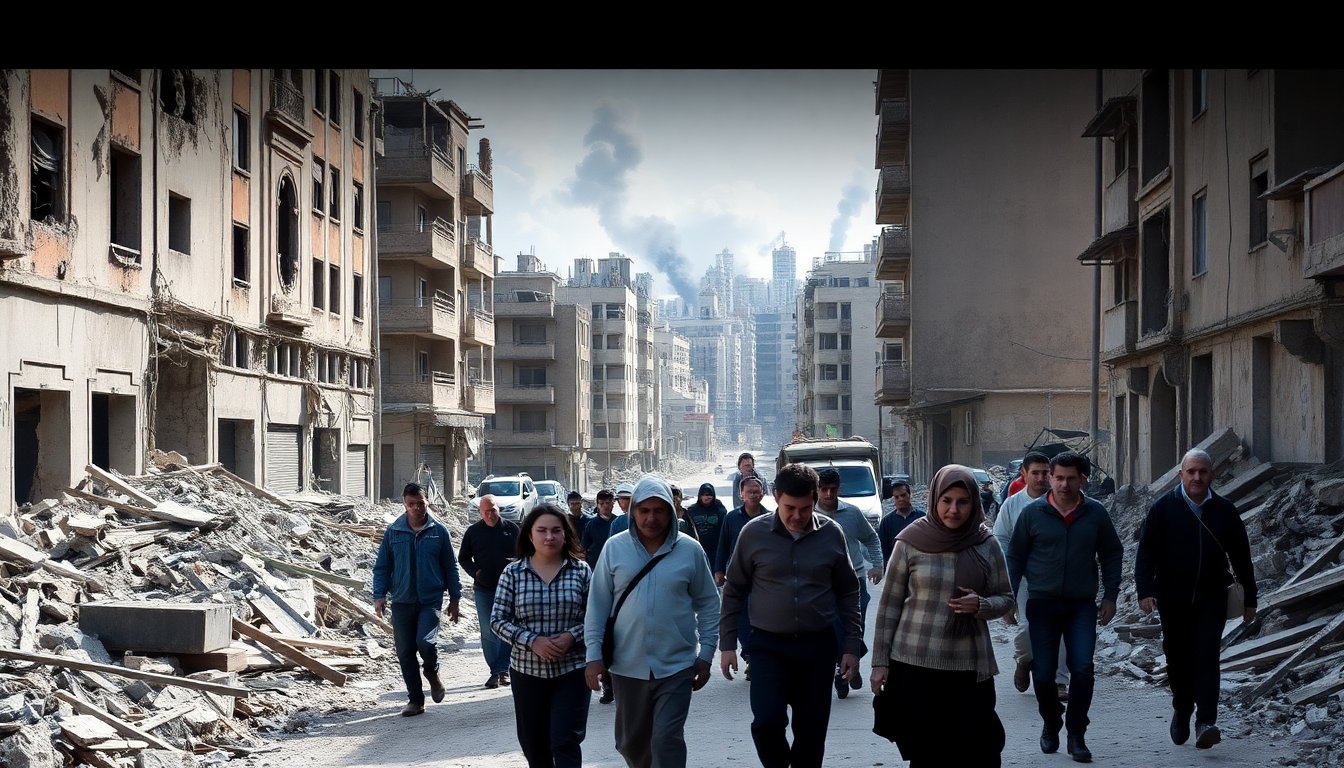Table of Contents
On the first day of a significant ceasefire, tens of thousands of displaced Palestinians began returning to Gaza City, an area now marked by destruction and loss. The ceasefire took effect after weeks of intense conflict and raises questions about the future governance of the region. Key Palestinian factions, including Hamas, have asserted that decisions regarding Gaza’s administration are strictly an internal Palestinian matter.
The facts
According to official sources, the ceasefire has allowed many displaced individuals to return home. They face significant challenges as they navigate the aftermath of the conflict. Reports indicate widespread destruction in Gaza City, with essential services severely impacted.
The consequences
The ceasefire has prompted discussions among Palestinian factions regarding their governance strategy. Increased unity among these groups may influence future political dynamics in the region. Local leaders emphasize the necessity for a cohesive approach to rebuilding efforts.
On Friday, Hamas and allied groups, including the Palestinian Islamic Jihad and the Popular Front for the Liberation of Palestine (PFLP), issued a joint statement affirming their support for the Palestinian people. They highlighted the resilience demonstrated by the population in countering Israeli attempts at forced displacement. The factions maintained their opposition to any external oversight, asserting that the governance of Gaza must be determined by its own inhabitants.
The facts
Groups are organizing an urgent comprehensive national meeting to discuss the next steps following the ceasefire. They aim to consolidate the Palestinian position, develop a cohesive national strategy, and initiate the reconstruction of their institutions based on partnership and transparency. However, the participation of the Fatah faction, a dominant force within the Palestinian Authority, remains uncertain.
The facts
The meeting is a critical response to recent developments in the region. Organizers believe it could provide a platform for unified action among Palestinian factions and address governance issues in Gaza.
The consequences
Should Fatah choose not to participate, it could undermine the effectiveness of the meeting. This may lead to fragmented strategies and hinder efforts to rebuild and govern effectively in Gaza.
The ceasefire is associated with a contentious proposal from former United States President Donald Trump<\/strong>. This plan suggests the creation of an international organization called the Board of Peace<\/em>. Trump would chair this board, which would include prominent figures like former British Prime Minister Tony Blair<\/strong>. Its role would be to oversee a temporary governance framework in Gaza. Although the ceasefire is active, the specifics regarding Gaza’s governance remain ambiguous.<\/p>
Under the ceasefire agreement, Hamas must release Israeli captives within 72 hours and is not permitted to publicly celebrate this action. The agreement ensures the daily entry of at least 600 aid trucks into Gaza and lays out plans for restoring essential services, including water supply systems and shelters for displaced individuals.<\/p>
The grim reality of returning home<\/h3>
As the ceasefire commenced, many Palestinians began their journeys back to their homes in northern Gaza. However, the Palestinian Civil Defence reported a grim finding, retrieving 63 bodies from the streets of Gaza City. The search for the missing continues, hampered by the rubble left in the wake of the conflict and ongoing restrictions in areas controlled by Israeli forces.
Al Jazeera correspondent Hani Mahmoud described the devastation witnessed upon returning to Gaza City, noting that the landscape had been irrevocably transformed. He remarked on the overwhelming destruction, stating, “As we approached the main coastal road, it was astounding to see how unrecognizable the area had become due to the extensive damage.” His observations highlighted a stark contrast from when he initially left, revealing nearly no intact structures.
The facts
The ceasefire has allowed some Palestinians to return home, but the situation remains dire. The Palestinian Civil Defence continues to search for missing individuals amid the destruction. The recovery efforts face challenges due to debris and restrictions imposed by Israeli forces.
The consequences
The devastation in Gaza City has intensified calls for reconstruction and humanitarian aid. Aid organizations emphasize the urgent need for assistance in rebuilding and supporting affected communities. The international community is urged to respond swiftly to the crisis.
The Gaza Government Media Office has called for a comprehensive reconstruction plan following extensive destruction in the region. The initial phase of the ceasefire agreement allows for the entry of machinery to clear debris, marking an essential step towards rebuilding.
Additionally, the agreement permits international organizations, including the United Nations and various humanitarian agencies, to distribute aid directly. This effectively sidelines the controversial GHF initiative, which has faced criticism for its operational methods. Reports indicate that many Palestinians have lost their lives while attempting to access GHF facilities.
GHF’s continued operations
Despite the ceasefire, the Gaza Humanitarian Fund (GHF) announced its intention to continue operations. Executive director John Acree stated, “Our team remains committed to providing humanitarian assistance and food to those in need. Our mission must continue as long as Gazans require support.” However, whistleblower reports have surfaced, detailing troubling incidents at GHF’s operational sites, which raise questions about the organization’s effectiveness and accountability.
As the region begins to recover from a challenging period, rebuilding Gaza City poses significant challenges for both residents and leaders.


